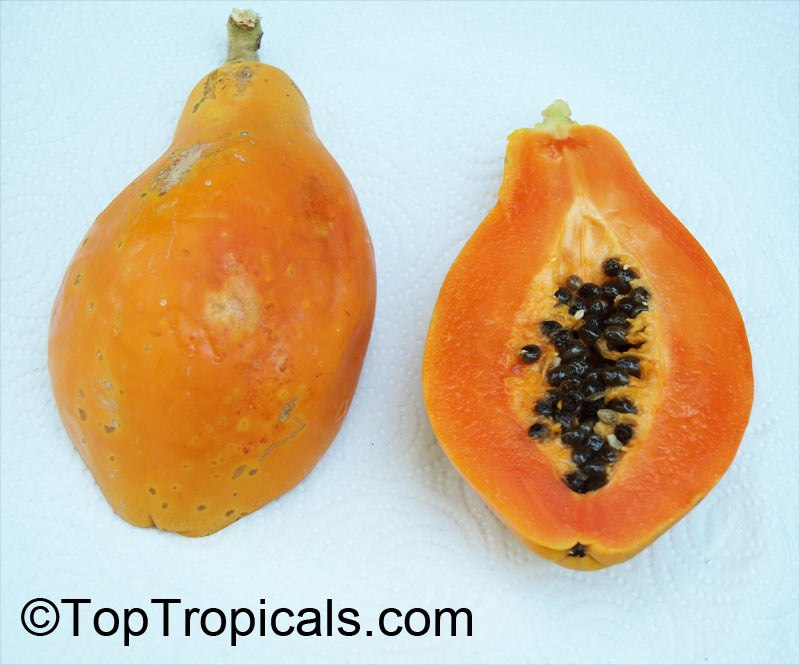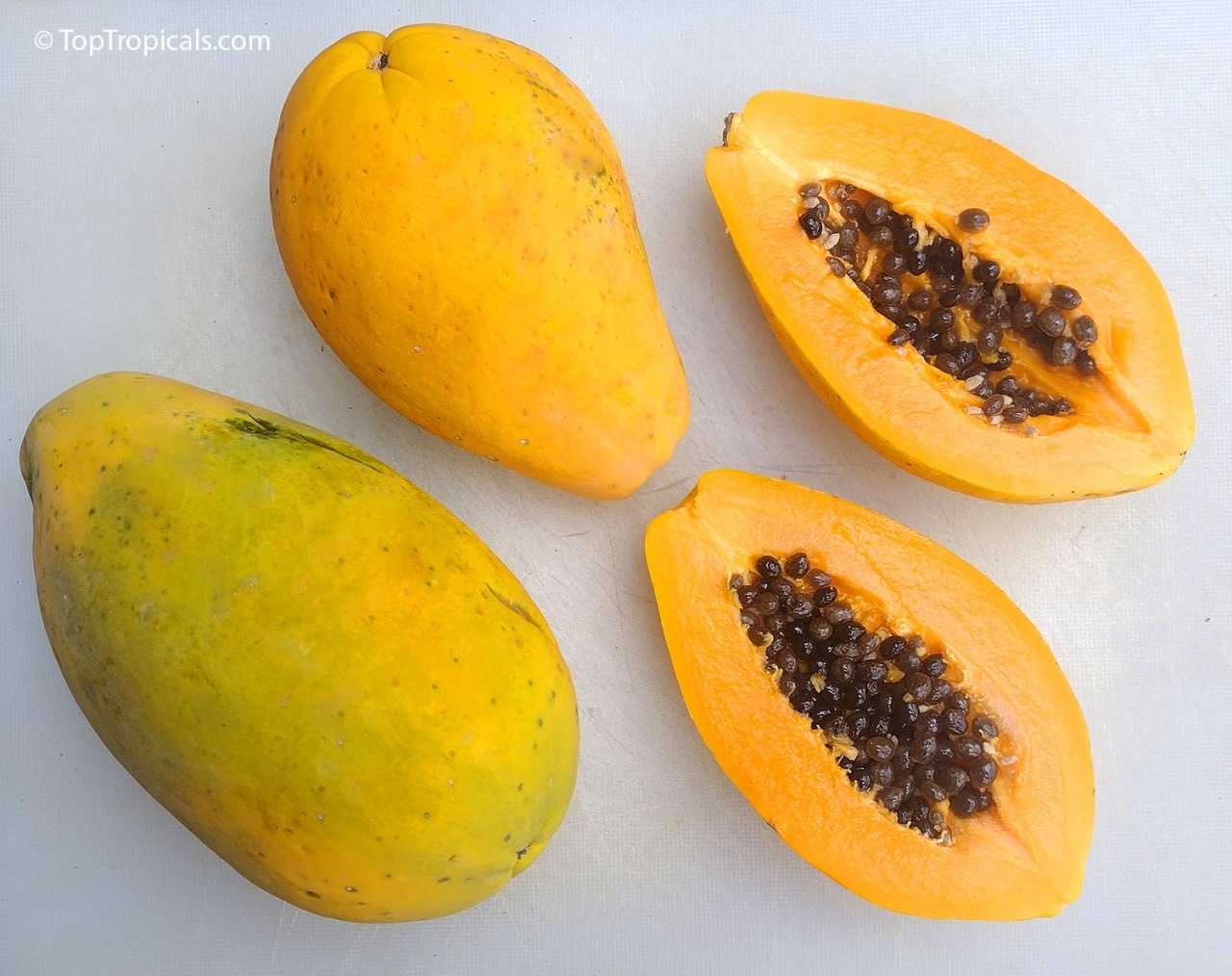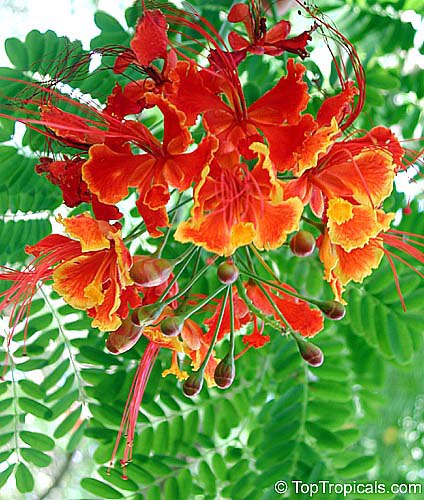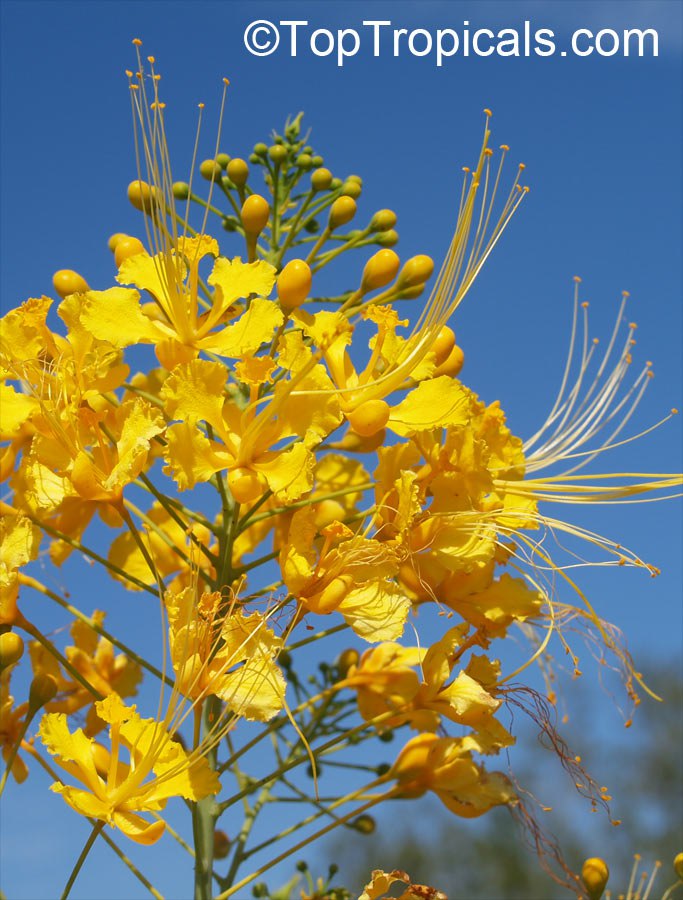Top 3 most wanted Papaya varieties

Papaya fruit is one of the superfoods as we mentioned earlier. Below are the top 3 most interesting varieties: a full size tree, a semi-dwarf and a dwarf.
- Maradol. Vigorous full size plant with high yield. Commercially grown throughout Central Mexico, these papayas are 3 to 5 pounds in weight and the shape of an elongated melon. Soft and juicy, they have salmon pink or red flesh that is very sweet with a slightly perfumed, fruity flavor. Cut them in half lengthwise. Delicious and irresistible with a sprinkle of fresh lemon or lime juice.
- Solo Sunset, Semi-Dwarf from Hawaii. Commercially grown primarily on Kauai, it has dark pink to reddish-orange flesh. The fruit is medium to small size, shape is somewhat round. This is the sweetest Papya variety we ever tasted!
- Solo Waimanalo, Dwarf - oval, large size yellow fruit with dark yellow flesh. Low bearing tree makes harvesting easy. Grows wonderfully in Central Florida in both a container or in the ground. Will go from seed to fruit in just one year. Waimanalo has yellow-orange flesh.
❓Do you eat Papaya fresh or you also cook with it? Share in comments👇
🛒 Shop Papaya Trees
#Food_Forest #Papaya
🏵 TopTropicals






